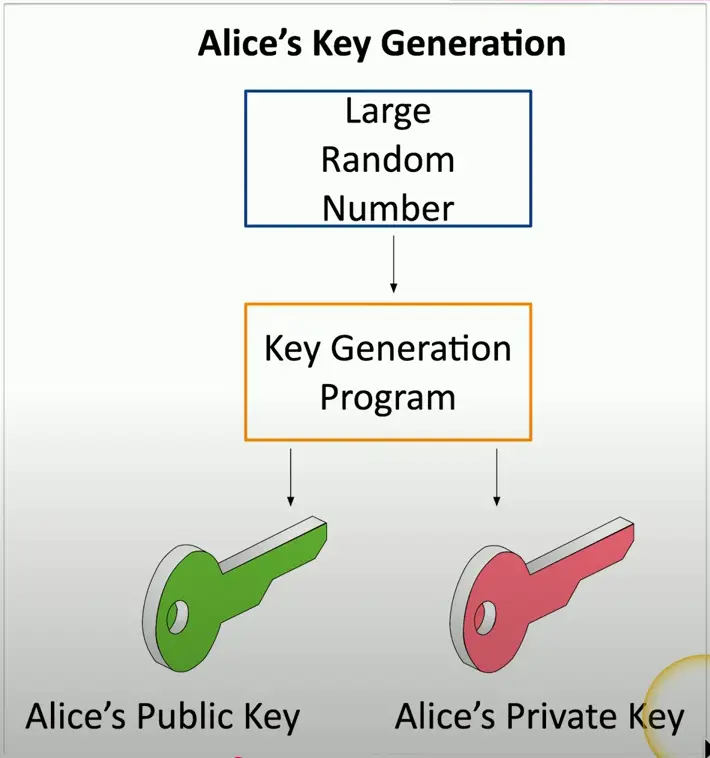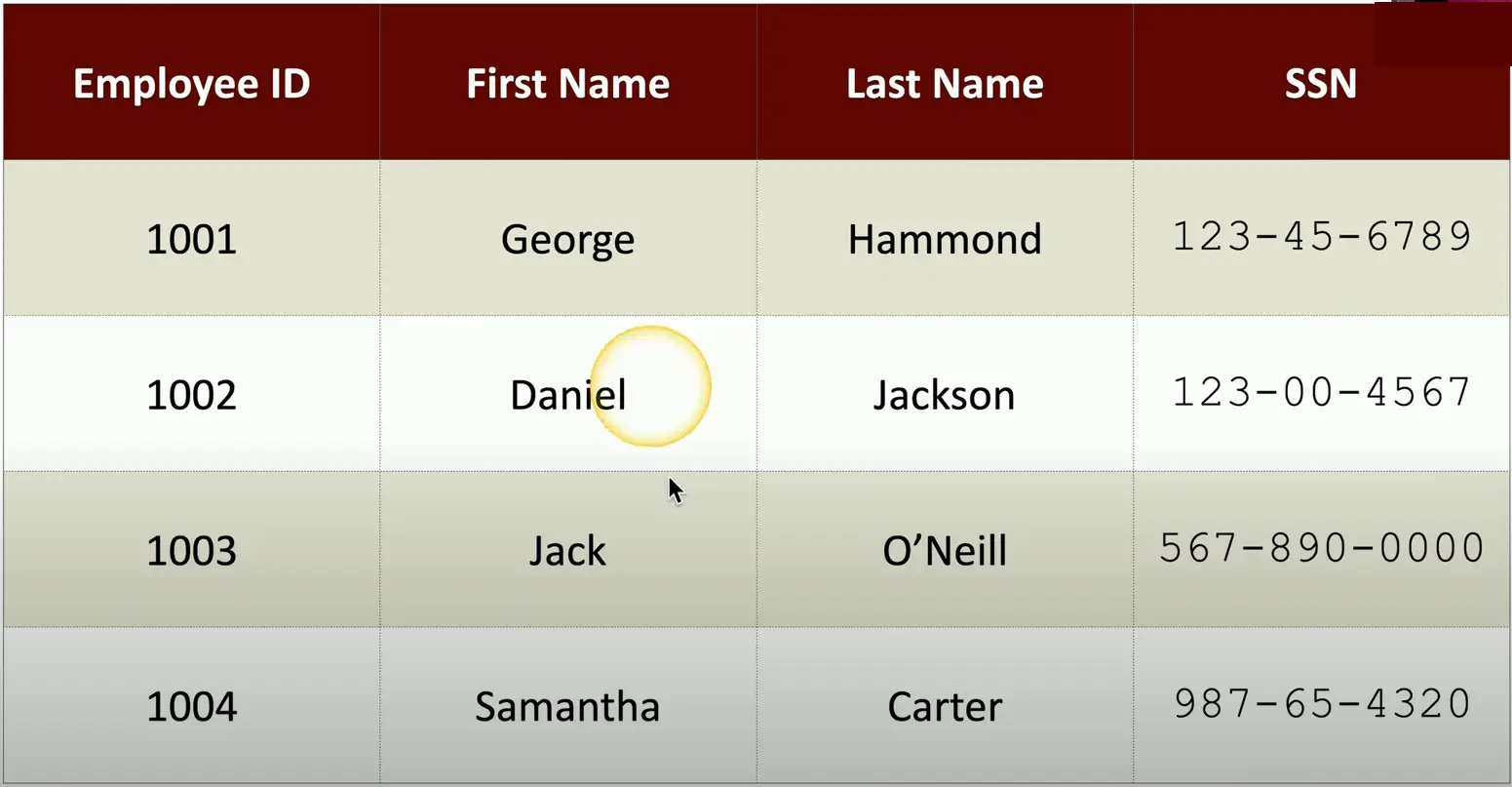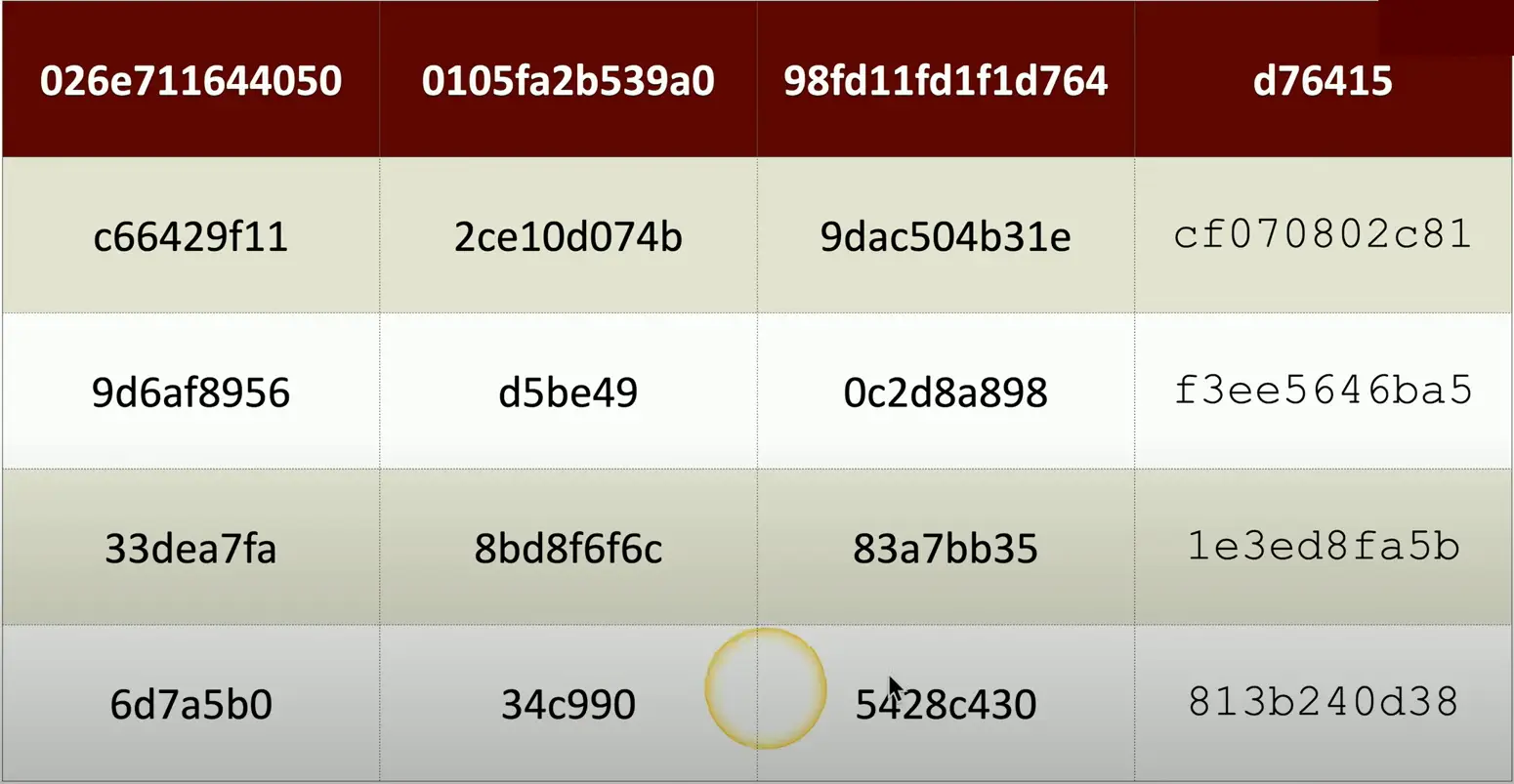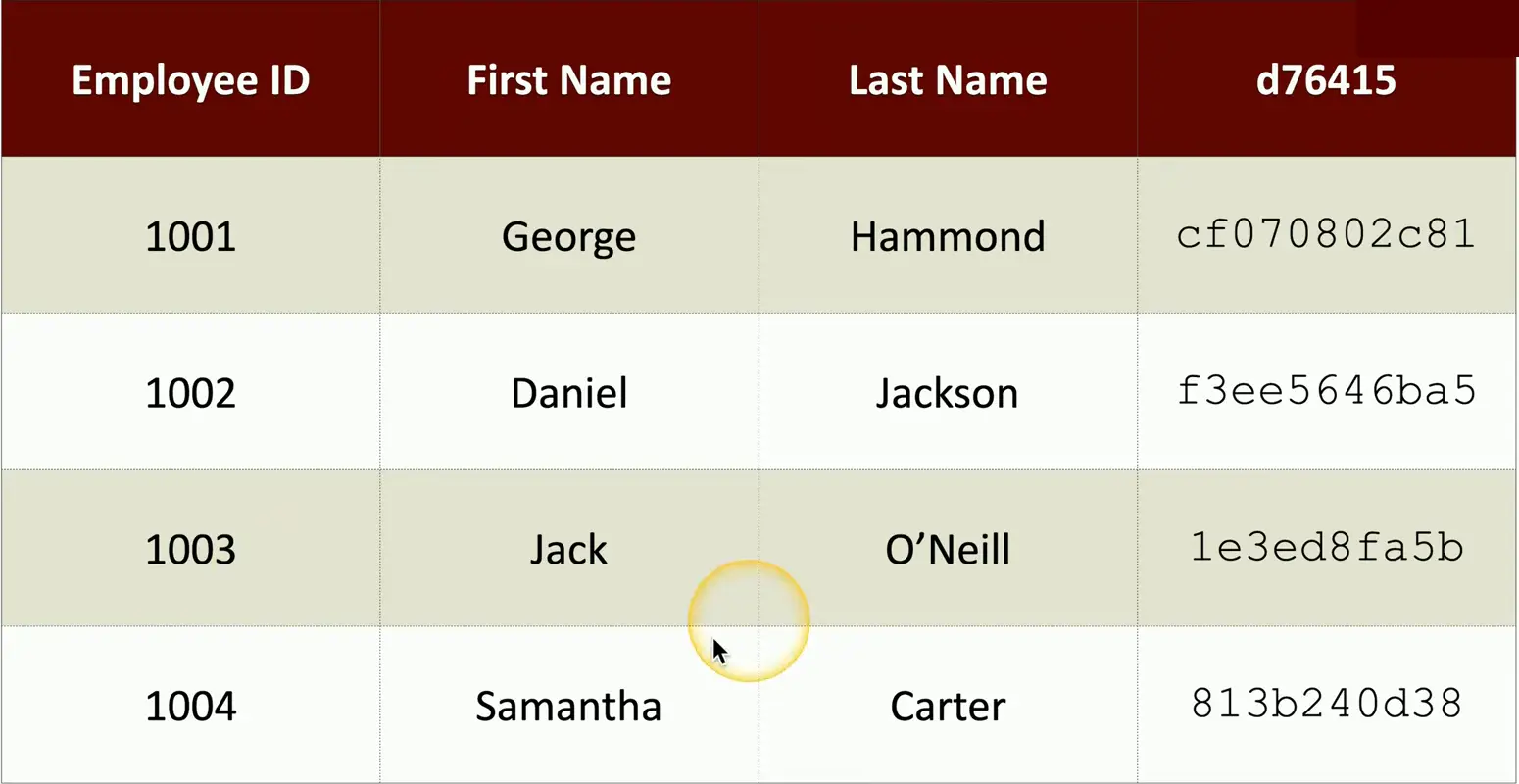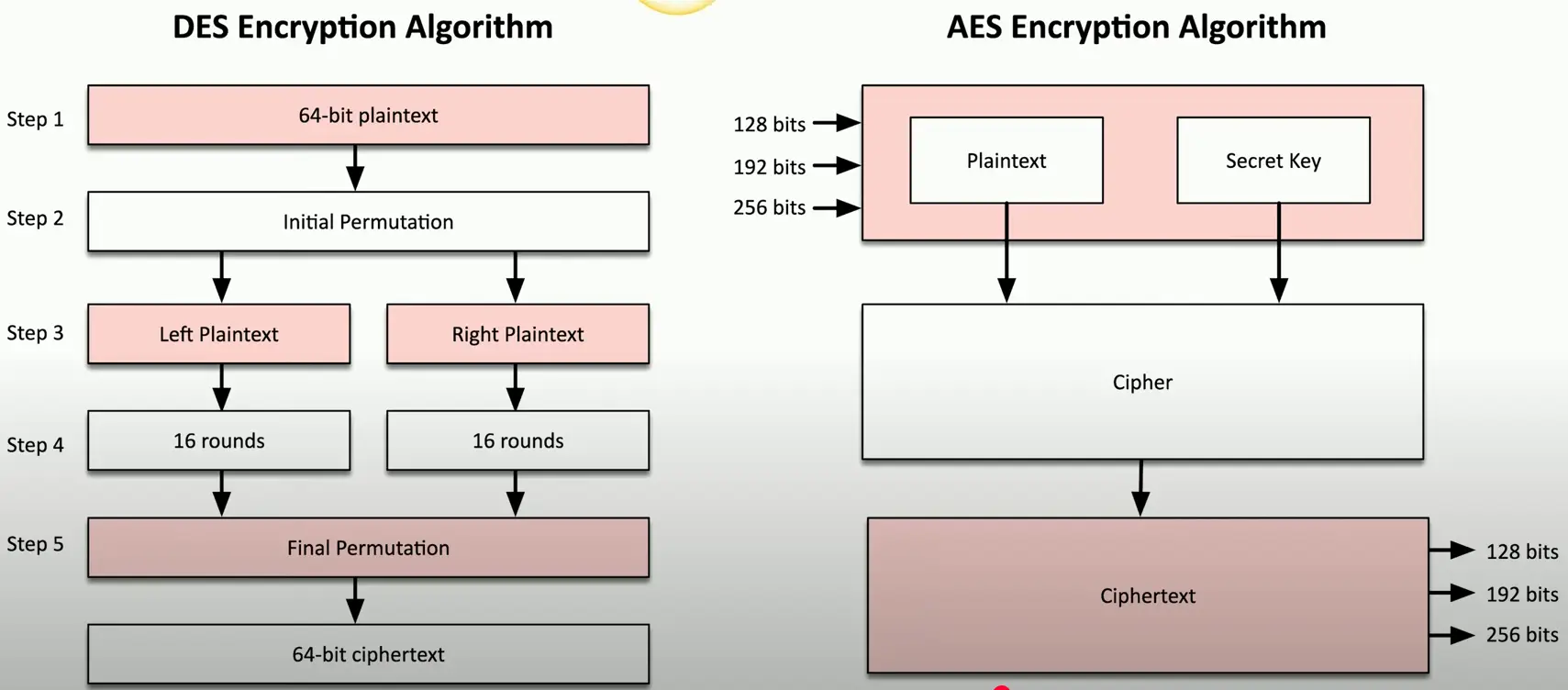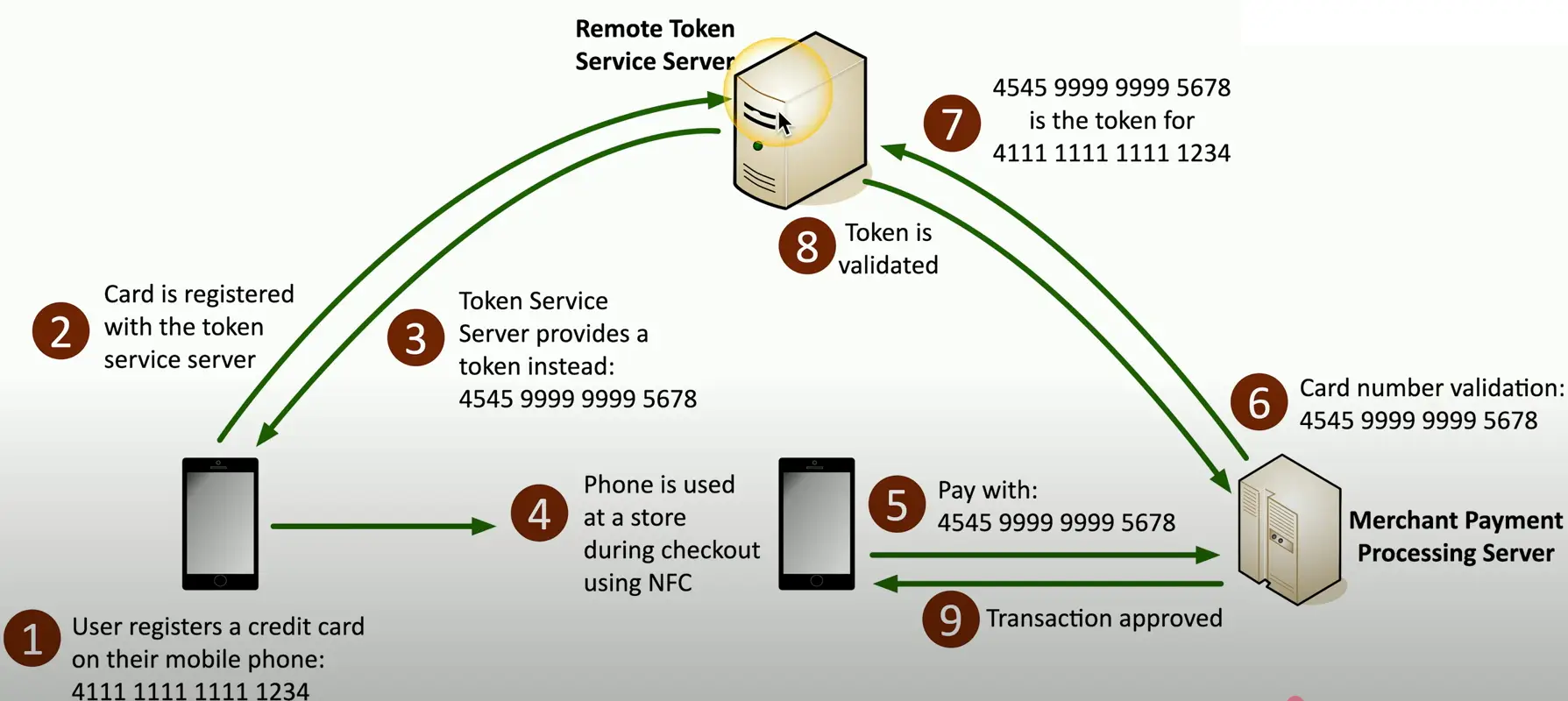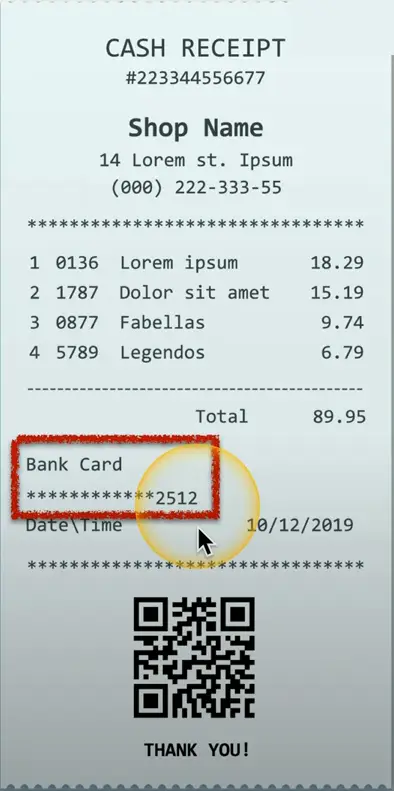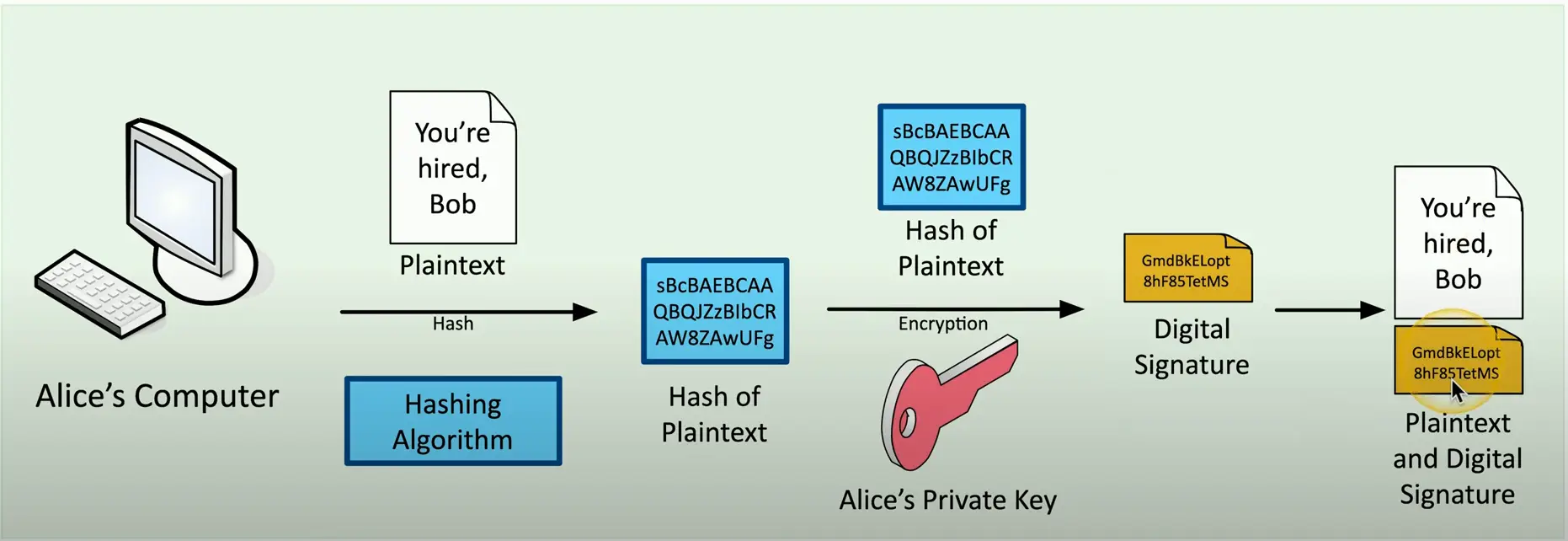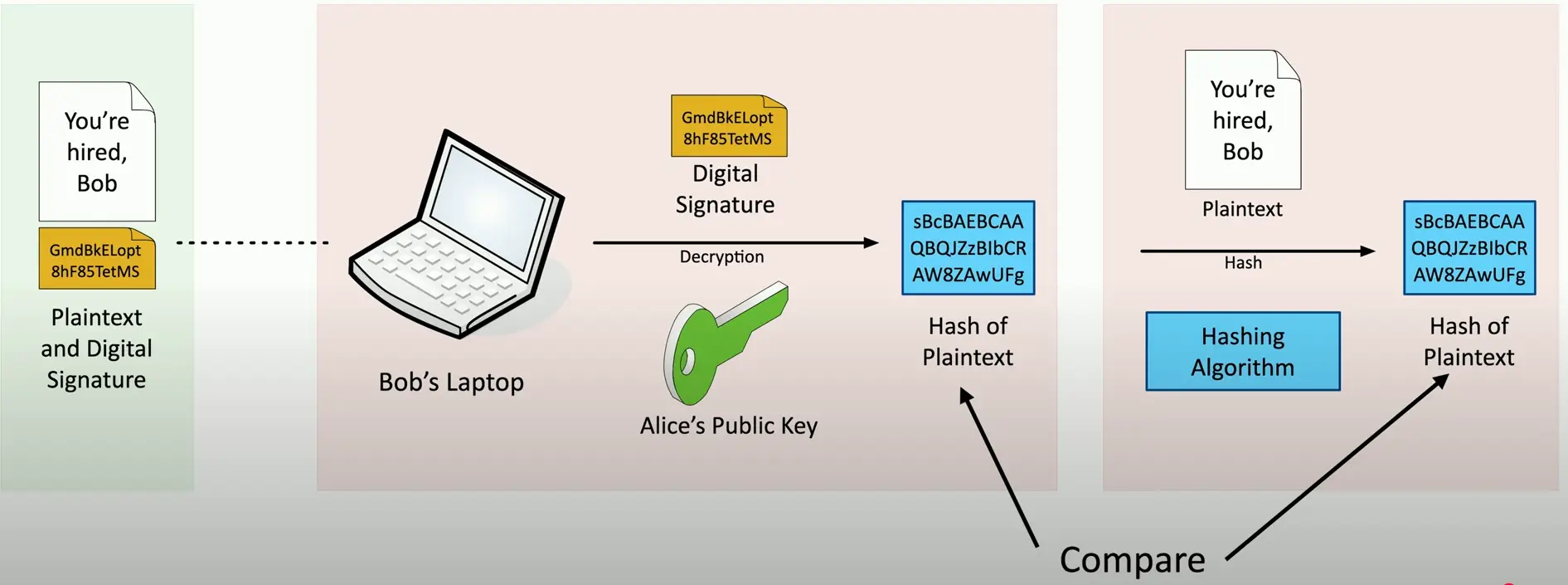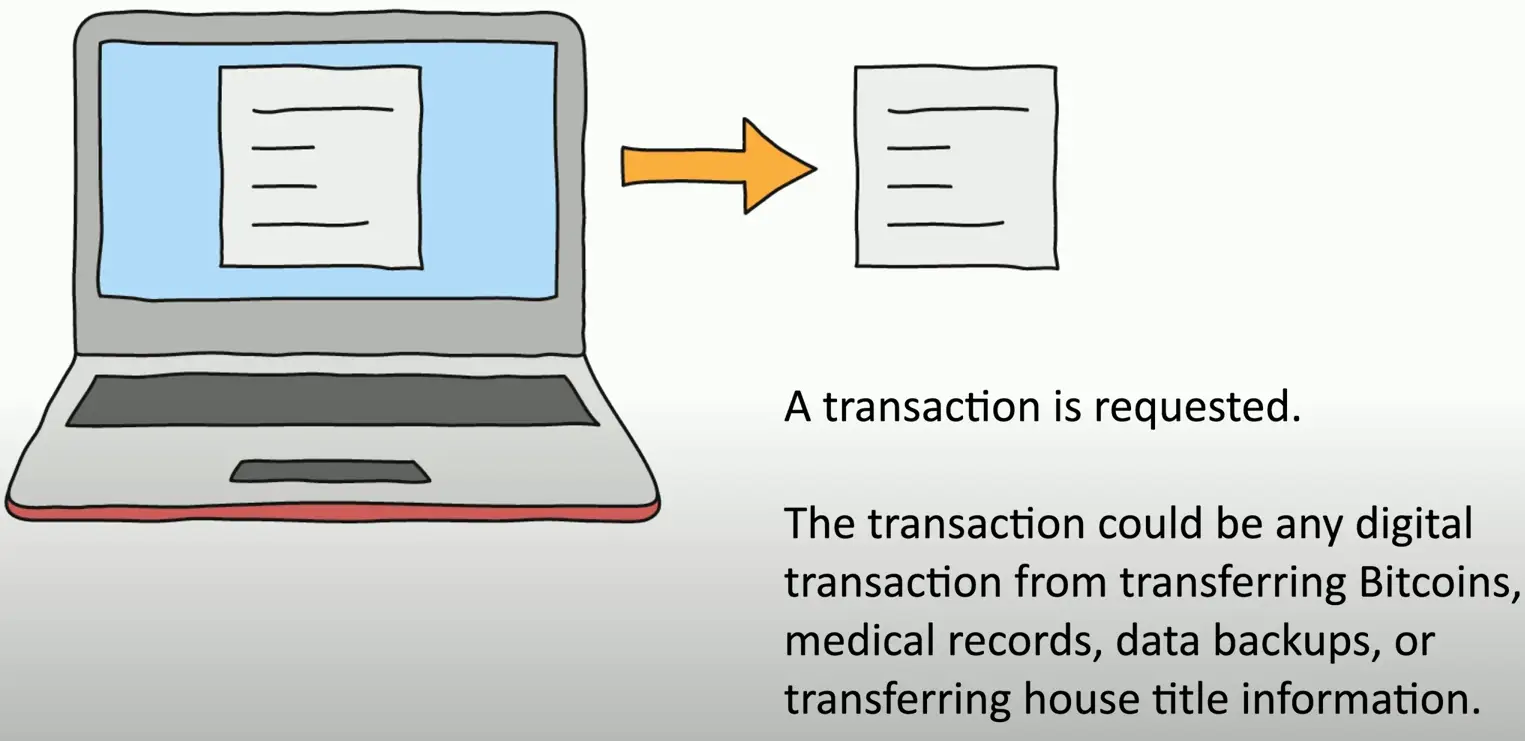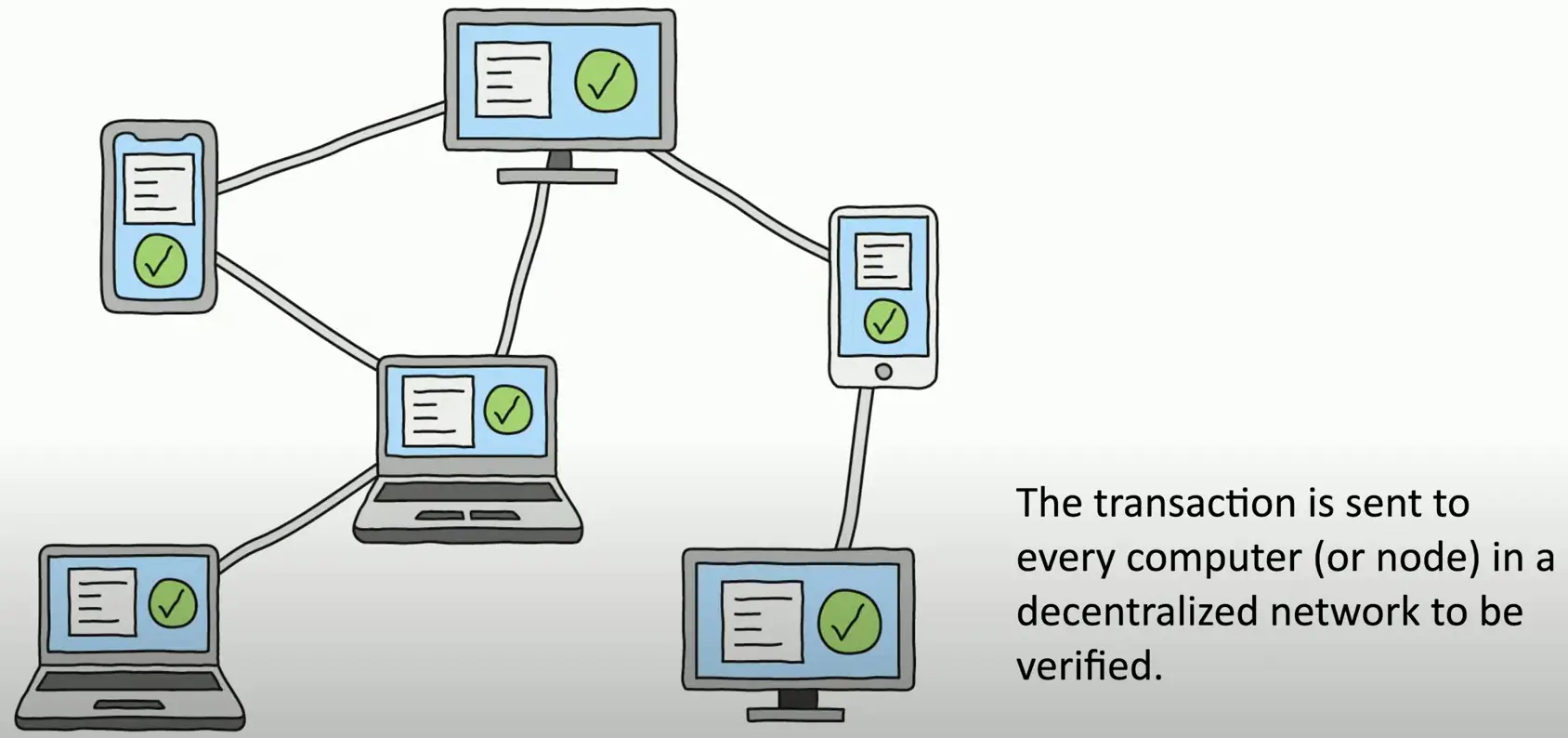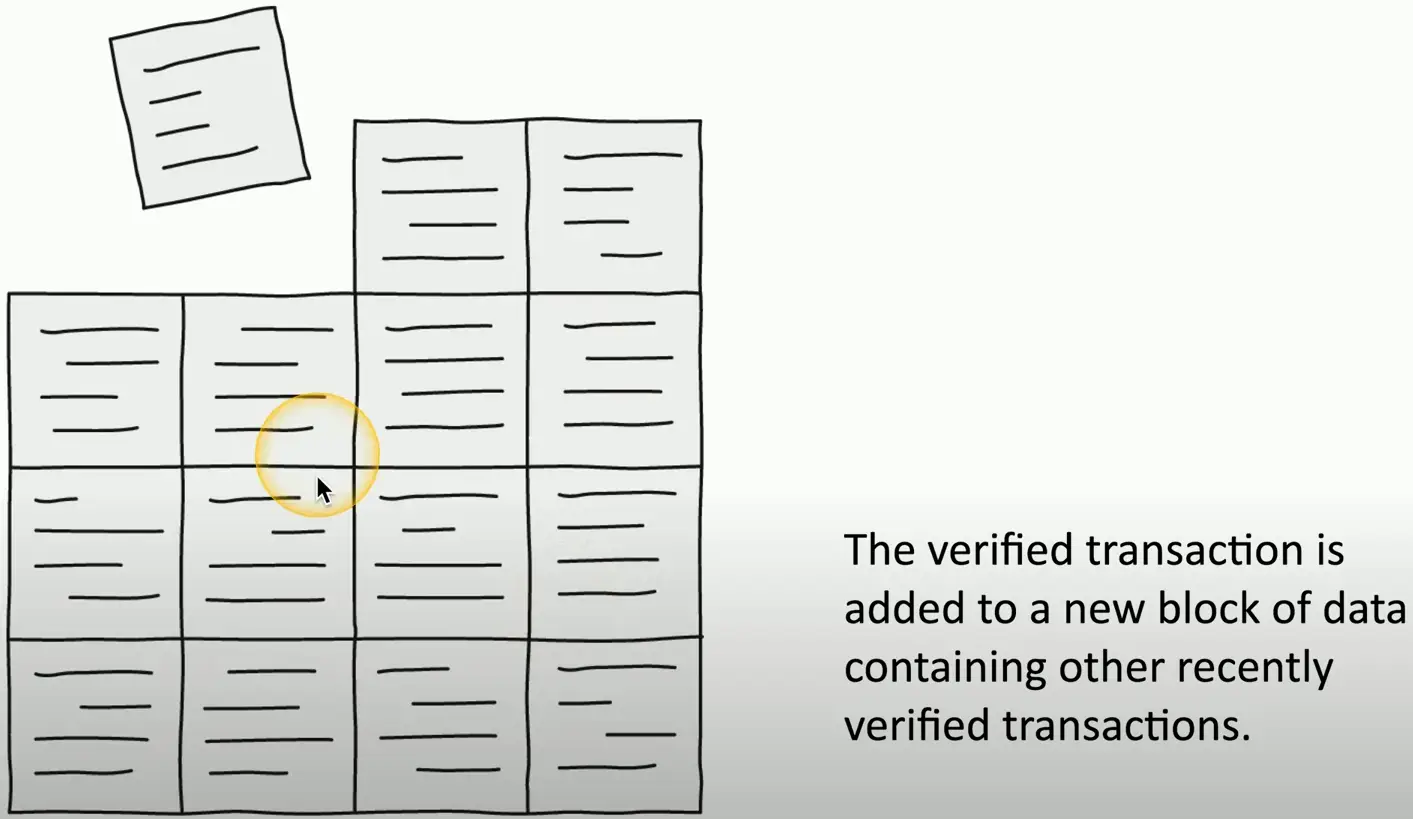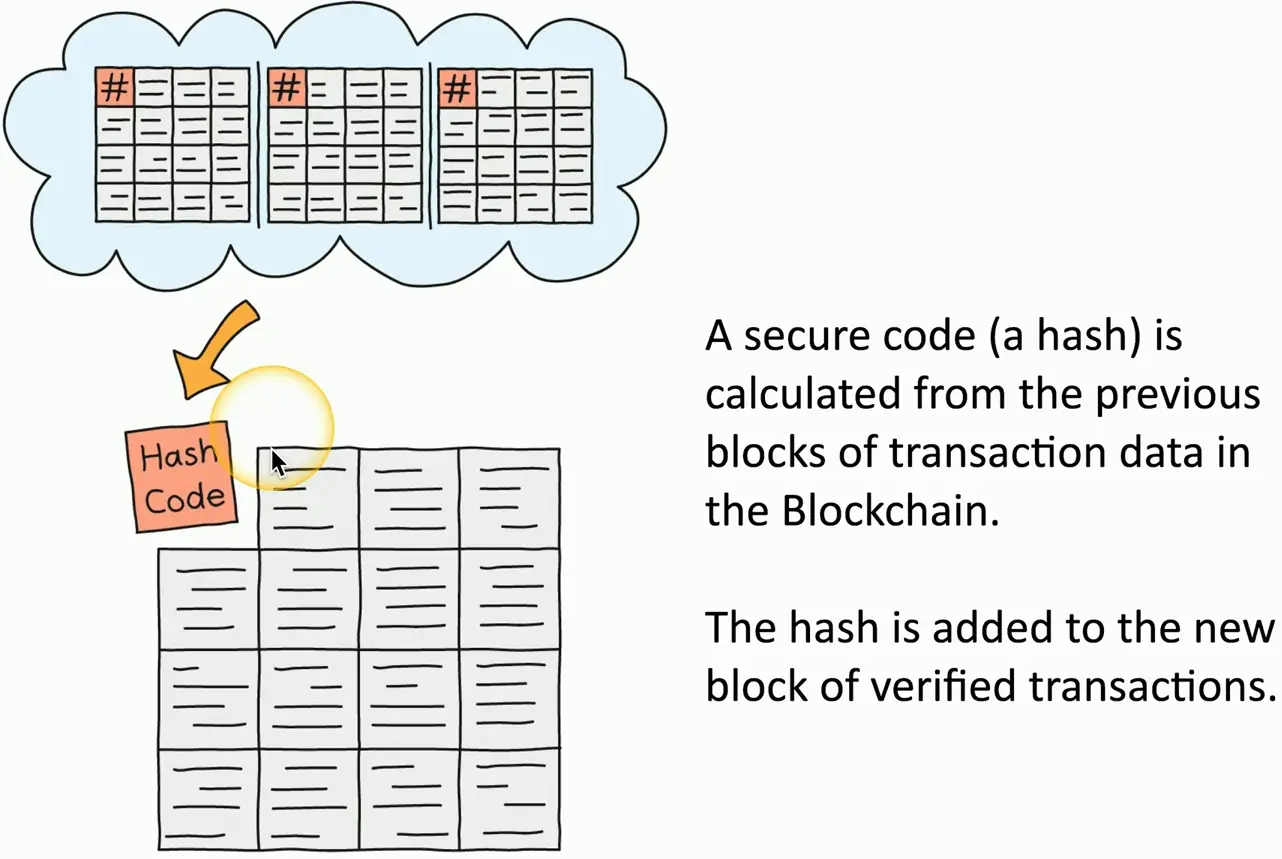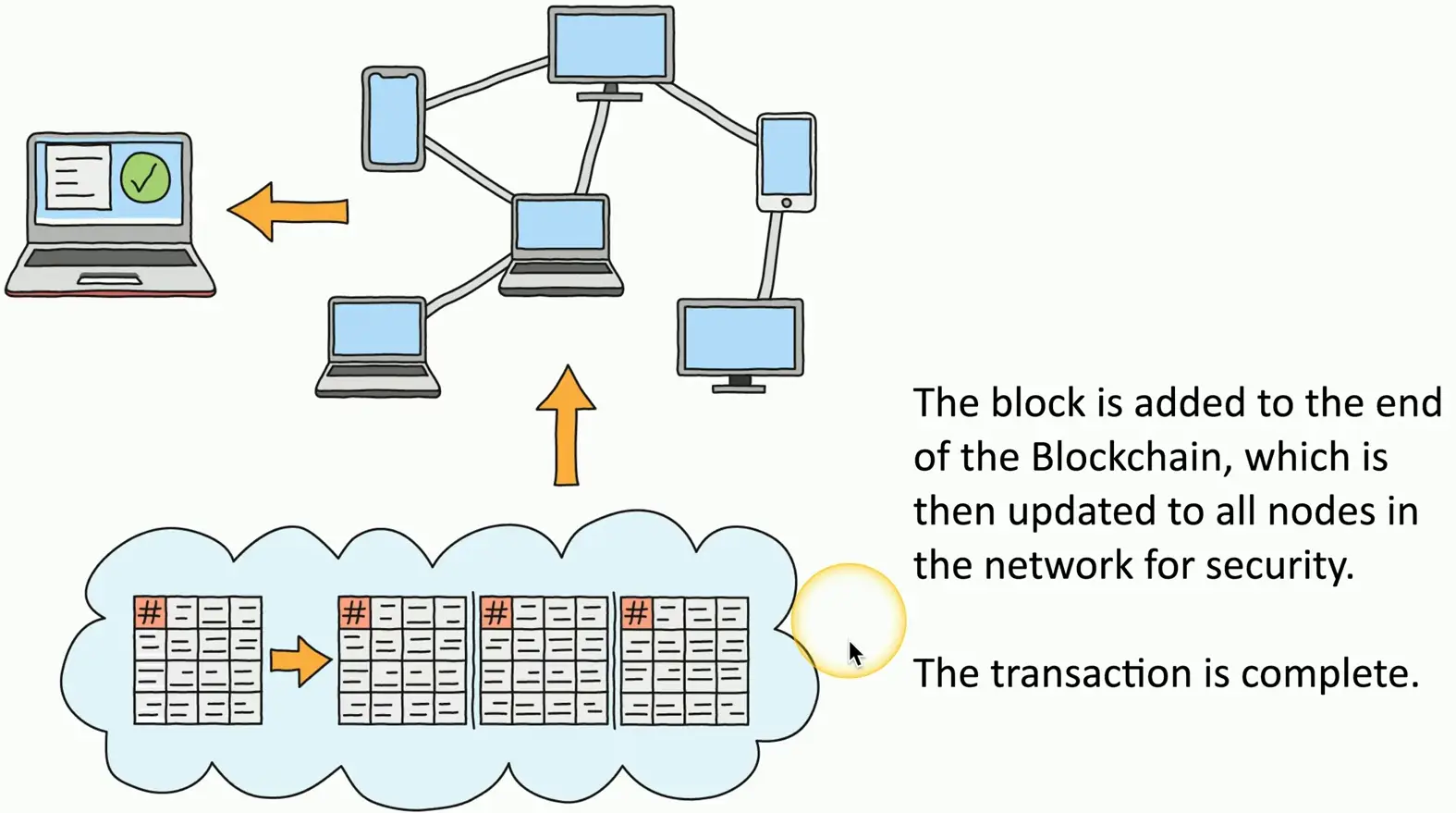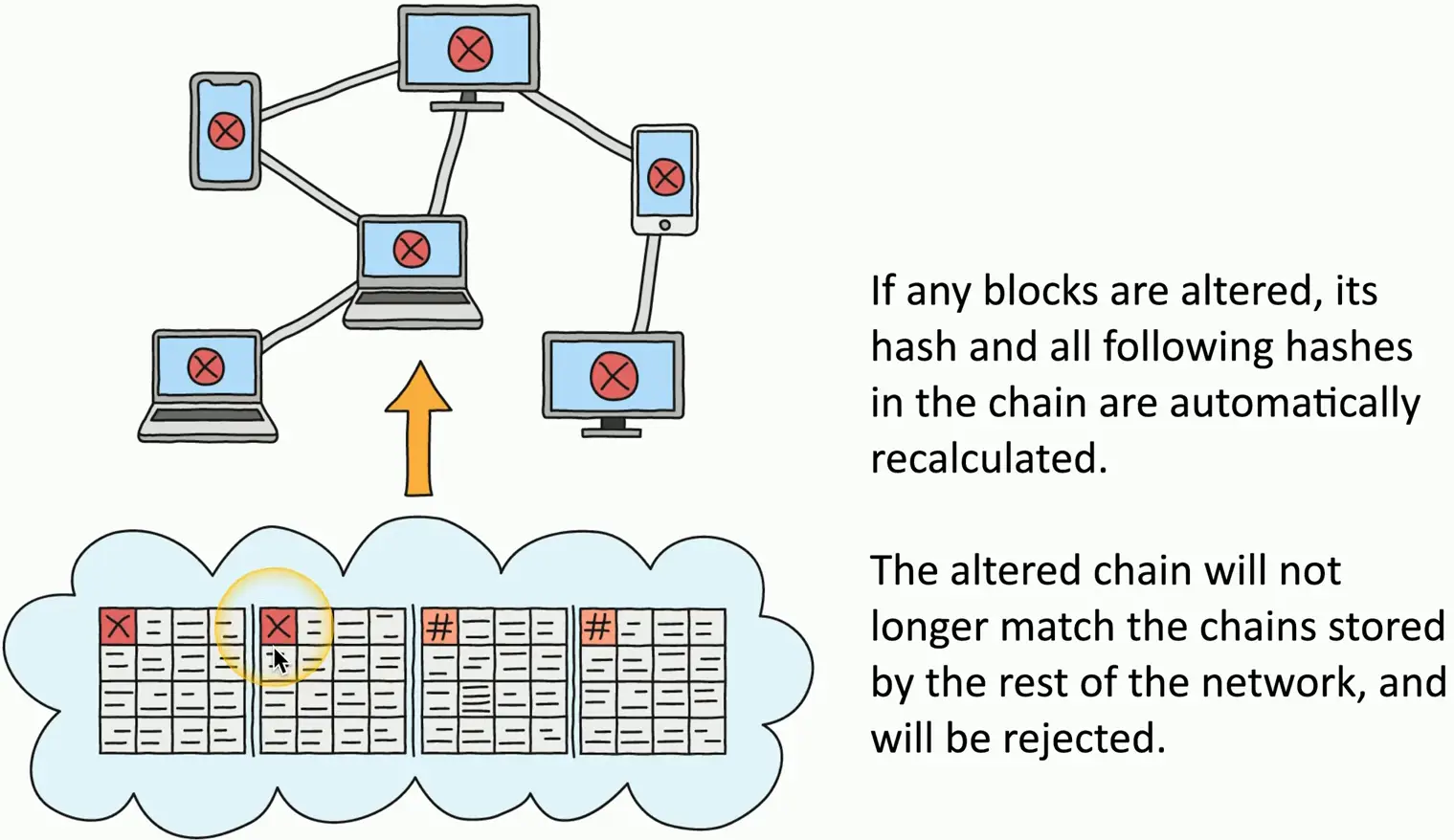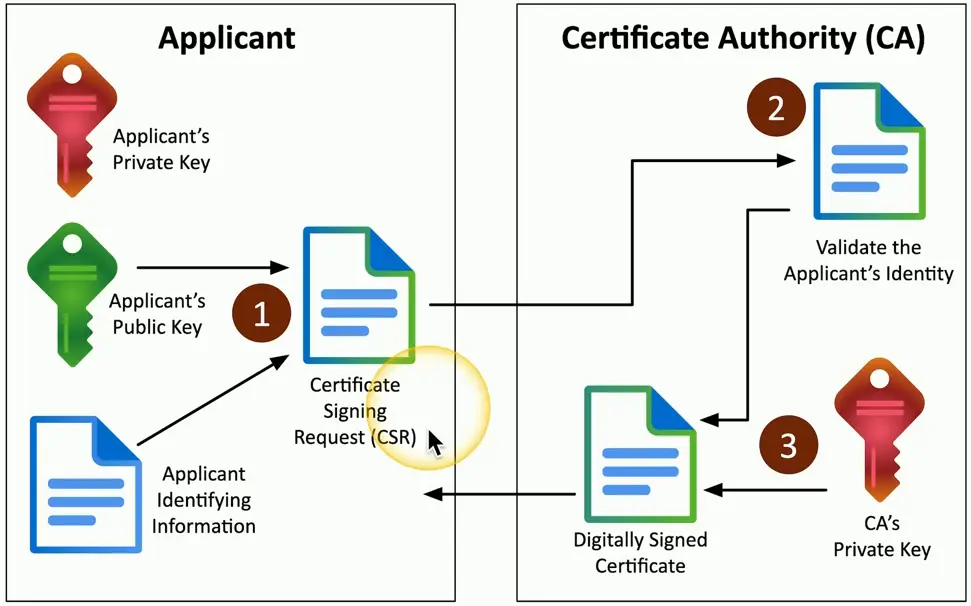Cryptographic Solutions
Public Key Infrastructure (PKI)
Policies, procedures, hardware, software, people
- Digital certificates: create, distribute, manage, store, revoke
This is a big, big, endeavor
- Lots of planning
Also refers to the binding of public keys to people or devices
- The certificate authority (CA)
- It’s all about trust
Symmetric Encryption
A single, shared key
- Encrypt with the key
- Decrypt with the same key
- If it gets out, you’ll need another key
Secret key algorithm
- A shared secret
Doesn’t scale very well
- Can be challenging to distribute
Very fast to use
- Less overhead than asymmetric encryption
- Often combined with asymmetric encryption
Asymmetric Encryption
Public key cryptography
- Two (or more) mathematically related keys
Private Key
- Keep this private
Public Key
- Anyone can see this key
- Give it away
The private key is the only key that can decrypt data encrypted with public key
- You cannot derive the private key from the public key
The Key Pair
Asymmetric encryption
- Public Key Cryptography
Key generation
- Build both the public and private key at the same time
- Lots of randomization
- Large prime numbers
- Lots and lots of math
Everyone can have the public key
- Only Alice has the private key
Asymmetric Encryption
Key Escrow
Someone else holds your decryption keys
- Your private keys are in the hands of a 3rd Party
- This may be within your own organization
This can be a legitimate business arrangement
- A business might need access to employee information
- Government agencies may need to decrypt partner data
Controversial?
- Of course
- But may still be required
Encrypting Data
Encrypting Stored Data
Protect data on storage devices
- SSD, hard drive, USB drive, cloud storage, etc.
- This is data at rest
Full-disk and partition/volume encryption
- BitLocker, FileVault, etc.
File encryption
- EFS (Encrypting File System), third-party utilities
Database Encryption
Protecting stored data
- And the transmission of that data
Transparent encryption
- Encrypt all database information with a symmetric key
Record-level encryption
- Encrypt individual columns
- Use separate symmetric keys for each column
Example Database:
You can encrypt the entire database
But this adds the extra overhead for database search and lookup. We have to decrypt the data every time we need to pull something from it.
One way to avoid, the overhead is to encrypt only the sensitive portion of the data, leaving rest as unencrypted.
Transport Encryption
Protect data traversing the network
- You are probably doing this now
Encrypting in the application
- Browsers can communicate using HTTPS
VPN (virtual private network)
- Encrypts all data transmitted over the network, regardless of the application
- Client-based VPN using SSL/TLS
- Site-to-site VPN using IPsec
Encryption Algorithms
There are many, many ways to encrypt data
- The proper “formula” must be used during encryption and decryption
Both sides decide on the algorithm before encrypting the data
- The details are often hidden from the end user
There are advantages and disadvantages between algorithms
- Security level, speed, complexity of implementation, etc.
Encryption Algorithm Comparison
Cryptographic Keys
There’s very little that is not known about the cryptographic process
- The algorithm is usually a known entity
- The only thing you don’t know is the key
The key determines the output
- Encrypted data
- Hash value
- Digital signature
Keep your key private
- It’s the only thing protecting your data
Key Lengths
Larger keys tend to be more secure
- Prevent brute-force attacks
- Attackers can try every possible key combination
Symmetric encryption
- 128-bit or larger symmetric keys are common
- These numbers get larger and larger as time goes on
Asymmetric encryption
- Complex calculations of prime numbers
- Larger keys than symmetric encryption
- Common to see key lengths of 3072 bits or larger
Key Stretching
A weak key is a weak key
- By itself, it’s not very secure
Make a weak key stronger by performing multiple processes
- Hash a password. Hash the hash of the password. And continue…
- Key stretching, key strengthening
Brute force attacks would require reversing each of those hashes
- The attacker has to spend much more time, even though the key is small
Key Exchange
A logistical challenge
- How do you share an encryption key across an insecure medium without physically transferring the key?
Out-of-band key exchange
- Don’t send the symmetric key over the network
- Telephone, courier, in-person, etc.
In-band key exchange
- It’s on the network
- Protect the key with additional encryption
- Use asymmetric encryption to deliver a symmetric key
Real-time Encryption/Decryption
There is a need for fast security
- Without compromising the security part
Share a symmetric session key using asymmetric encryption
- Client encrypts a random (symmetric) key with a server’s public key
- The server decrypts this shared key and uses it to encrypt data
- This is the session key
Implement session keys carefully
- Need to be changed often (ephemeral keys)
- Need to be unpredictable
Symmetric Key from Asymmetric Keys
Use public and private key cryptography to create a symmetric key
- Math is powerful
Encryption Technologies
Trusted Platform Module (TPM)
A specification for cryptographic functions
- Cryptography hardware on a device
Cryptographic processor
- Random number generator, key generators
Persistent Memory
- Unique keys burned in during manufacturing
Versatile memory
- Storage keys, hardware configuration information
- Securely store BitLocker keys
Password protected
- No dictionary attacks
Hardware Security Module (HSM)
Used in large environments
- Clusters, redundant power
- Securely store thousands of cryptographic keys
High-end cryptographic hardware
- Plug-in card or separate hardware device
Key backup
- Secure storage in hardware
Cryptographic accelerators
- Offload that CPU overhead from other devices
Key Management System
Services are everywhere
- On-premises, cloud-based
- Many keys for many services
Manage all keys from a centralized manager
- Often provided as third-party software
- Separate the encryption keys from the data
All key management from one console
- Create keys for a specific service or cloud provider (SSL/TLS, SSH, etc.)
- Associate keys with specific users
- Rotate keys on regular intervals
- Log key use and important events
Keeping Data Private
Our data is located in many places
- Mobile phones, cloud, laptops, etc.
- The most private data is often physically closest to us
Attackers are always finding new techniques
- It’s a race to stay one step ahead
Our data is changing constantly
- How do we keep this data protected?
Secure Enclave
A protected area of our secrets
- Often implemented as a hardware processor
- Isolated from the main processor
- Many technologies and names
Provides extensive security features
- Has its own boot ROM
- Monitors the system boot process
- True random number generator
- Real-time memory encryption
- Performs AES encryption in hardware
- And more…
Obfuscation
The process of making something unclear
- It’s now much more difficult to understand
But it’s not impossible to understand
- If you know how to read it
Hid information in plain sight
- Store payment information without storing a credit card number
Hide information inside an image
- Steganography
Steganography
Greek for “concealed writing”
- Security through obscurity
Message is invisible
- But it’s really there
The covertext
- The container document or file
Common Steganography Techniques
Network based
- Embed messages in TCP packets
Use an image
- Embed the message in the image itself
Invisible watermarks
- Yellow dots on printers
Other Steganography Types
Audio steganography
- Modify the digital audio file
- Interlace a secret message within the audio
- Similar techniques to image steganography
Video steganography
- A sequence of images
- Use image steganography on a larger scale
- Manage the signal-to-noise ratio
- Potentially transfer much more information
Tokenization
Replace sensitive data with a non-sensitive placeholder
- SSN 266-12-1112 is no 691-618539
Common with credit card processing
- Use a temporary token during payment
- An attacker capturing the card numbers can’t use them later
This isn’t encryption or hashing
- The original data and token aren’t mathematically related
Data Masking
Data Obfuscation
- Hide some original data
Protects PII
- And other sensitive data
May only be hidden from view
- The data may still be intact in storage
- Control the view based on permissions
Many techniques
- Substituting, shuffling, encrypting, masking out, etc.
Hashing and Digital Signatures
Hashes
Represent data as a short string of text
- A message digest, a fingerprint
One-way trip
- Impossible to recover the original message from the digest
- Use to store passwords/confidentiality
Verify a downloaded document is the same as the original
- Integrity
Can be a digital signature
- Authentication, non-repudiation, and integrity
Collision
Hash functions
- Take an input of any size
- Create a fixed size string
- Message digest, checksum
The hash should be unique
- Different inputs should never create the same hash
- If they do, it’s a collision
MD5 has a collision problem
- Found in 1996
- Don’t use MD5 for anything important
Practical Hashing
Verify a downloaded file
- Hashes may be provided on the download site
- Compare the downloaded files hash with the posted hash value
Password Storage
- Instead of storing the password, store a salted hash
- Compare hashes during the authentication process
- Nobody ever knows your actual password
Adding Some Salt
Salt
- Random data added to a password when hashing
Every user gets their own random salt
- The salt is commonly stored with the password
Rainbow tables won’t work with salted hashes
- Additional random value added to the original password
This slows down the brute force process
- It doesn’t completely stop the reverse engineering
Salting the Hash
Each user gets a different random hash
- The same password creates a different hash
Digital Signature
Prove the message was not changed
- Integrity
Prove the source of the message
- Authentication
Make sure the signature isn’t fake
- Non-repudiation
Sign with the private key
- The message doesn’t need to be encrypted
- Nobody else can sign this (obviously)
Verify with the public key
- Any change in the message will invalidate the signature
Creating a Digital Signature
Blockchain Technology
A distributed ledger
- Keep track of transaction
Everyone on the blockchain network maintains the ledger
- Records and replicates to anyone and everyone
Many practical applications
- Payment processing
- Digital identification
- Supply chain monitoring
- Digital Voting
The Blockchain Process
Certificates
Digital Certificates
A public key certificate
- Binds a public key with a digital signature
- And other details about the keyholder
A digital signature adds trust
- PKI uses Certificate Authorities for additional trust
- Web of Trust adds other users for additional trust
Certificate creation can be built into the OS
- Part of Windows Domain services
- Many 3rd-party options
What’s in a digital Certificate?
X.509
- Standard format
Certificate Details
- Serial number
- Version
- Signature algorithm
- Issuer
- Name of the cert holder
- Public key
- And more…
Root of Trust
Everything associated with IT security requires trust
- A foundational characteristic
How to build trust from something unknown?
- Someone/something trustworthy provides their approval
Refer to the root of trust
- An inherently trusted component
- Hardware, software, firmware, or other component
- Hardware security module (HSM), Secure Enclave, Certificate Authority, etc.
Certificate Authorities
You connect to a random website
- Do you trust it?
Need a good way to trust an unknown entity
- Use a trusted third-party
- An authority
Certificate Authorization (CA) has digitally signed the website certificate
- You trust the CA, therefore you trust the website
- Real-time verification
Third-party Certificate Authorities
Built-in to your browser
- Any browser
Purchase your website certificate
- It will be trusted by everyone’s browser
CA is responsible for vetting the request
- They will confirm the certificate owner
- Additional verification information may be required by the CA
Certificate Signing Requests
Create a key pair, then send the public key to the CA to be signed
- A certificate signing request (CSR)
The CA validates the request
- Confirms DNS emails and website ownership
CA digitally signs the cert
- Returns to the applicant
Private Certificate Authorities
You are your own CA
- Build it in-house
- Your devices must trust the internal CA
Needed for medium-to-large organization
- Many web servers and privacy requirements
Implement as part of your overall computing strategy
- Windows Certificate Services, OpenCA
Self-signed Certificates
Internal certificates don’t need to be signed by a public CA
- Your company is the only one going to use it
- No need to purchase trust for devices that already trust you
Build your own CA
- Issue your own certificates signed by your own CA
Install the CA certificate/trusted chain on all devices
- They will now trust any certificate signed by your internal CA
- Works exactly like a certificate you purchased
Wildcard Certificates
Subject Alternative Name (SAN)
- Extension to an X.509 certificate
- Lists additional identification information
- Allows a certificate to support many domains
Wildcard domain
- Certificates are based on the name of the server
- A wildcard domain will apply to all server names in the domain
Key Revocation
Certificate Revocation List (CRL)
- Maintained by the CA
- Can contain many revocations in a large file
Many reasons
- Changes all the time
April 2014 — CVE-2014-0160
- Heartbleed
- OpenSSL flaw put the private key of affected web servers at risk
- OpenSSL was patched, every web server certificate was replaced
- Older certificates were moved to the CRL
OCSP Stapling
Online Certificate Status Protocol
- Provides scalability for OCSP checks
The CA is responsible for responding to all client OCSP requests
- This may not scale well
Instead, have the certificate holder verify their own status
- Status information is stored on the certificate holder’s server
OCSP status is “stapled” into the SSL/TLS handshake
- Digitally signed by the CA
Getting Revocation Details to the Browser
OCSP (Online Certificate Status Protocol)
- The browser can check certificate revocation
Message usually sent to an OCSP responder via HTTP
- Easy to support over Internet links
- More efficient than downloading a CRL
Not all browsers/apps support OCSP
- Early Internet Explorer versions didn’t support OCSP
- Some support OCSP, but don’t bother checking
